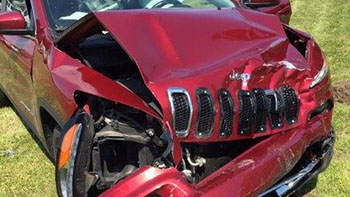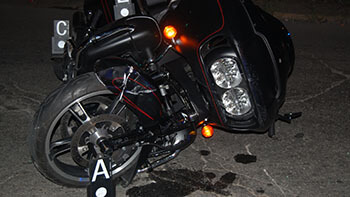Brain & Spinal Cord Injury Lawyers in Indianapolis, IN
Did You Receive A Traumatic Brain Injury (TBI)?
Get Expert Legal Advice Today!
A traumatic injury to the brain or spinal cord can cause lifelong impairment, lost wages, and considerable physical and emotional suffering for both the victim and their families. Whether by surgical error, birth injury, subway or train accident, automobile collision, or slip and fall accidents, these injuries, which are often permanent and life-altering, are many times caused by the fault of others.
Top Brain Injury Attorneys in Indianapolis
At Young & Young Law, we empathize with the lasting physical and economic consequences of a brain or spinal cord injury. We have represented clients who have been diagnosed with mild, moderate and severe traumatic brain injuries. We understand the complex and unique treatment plans and rehabilitation programs available for brain injuries. We have worked with neurologists, neurophysiologists, and a variety of specialists to help victims and their families heal from such a traumatic event.
Suffering From A Brain or Spinal Injury?
What is a Traumatic Brain Injury?
Traumatic Brain Injury (TBI) is a major cause of death and disability around the world. It occurs when an external force causes damage to the brain and or spinal cord, resulting in physical, mental or emotional impairment.
Brain Injuries
- Brain trauma is usually the result of a direct blow to the head, which can bruise the brain and damage its internal tissues and blood. The severity of a head or brain injury can range from a mild concussion to a severe injury that results in coma or even death. In a closed head or brain injury, there is no break in the skull and the brain is jarred against the sides of the skull, shearing (or tearing) the internal lining, nerves, tissues and blood vessels. This may cause bleeding, bruising or swelling. These types of injuries are often classified as subdural hematomas, sub-arachnoid bleeds or epidural bleeds. In a penetrating or open head injury, the skull is broken.
- The sudden and profound injury the brain sustains at the time of the accident is called the primary brain injury. It can be followed by secondary brain injury, a cascade of cellular, chemical, tissue or blood vessel changes that evolve in the hours to days after the accident. These changes can further destroy brain tissue.
Spinal Cord Injuries
- Spinal cord injuries affect between four and five million Americans yearly, and 400,000 live with the continuing effects of these injuries. Injuries to the neck (the cervical spine) or to the back (the lumbar spine) can result in serious, permanent damage to the spinal cord.
- An injury to the spinal cord, the central carrier of signals throughout the body, may be simply a bruise (or contusion) or a partial or complete tear. A mild contusion may cause the temporary loss of some function below the site of the injury. A complete transection, or severing of the spinal cord, causes a total and permanent loss of sensation and movement below the site of the injury.
Contact the Brain & Spinal Injury Lawyers in Indianapolis
For a free consultation about our ability to represent your claims, contact one of the experienced personal injury lawyers at Young & Young in Indianapolis.
Brain & Spinal Cord Injury FAQs
If you have received a catastrophic injury to your brain or spinal cord due to negligence, bodily harm or via an accident, it is crucial to reach out to the traumatic brain & spinal cord injury lawyers at Young & Young Law in Indianapolis, IN. We are dedicated to ensuring you receive full compensation for your injuries. Below are some frequently asked questions related to Indianapolis brain & spinal cord injury lawsuits.
What is a traumatic brain injury?
A traumatic brain injury (TBI) refers to an intracranial injury and can be categorized as either closed or penetrating. These injuries occur from various traumatic events, such as car, motorcycle, and bicycle accidents, as well as pedestrian mishaps, falls & physical harm. TBI can often lead to fatal outcomes. Survivors may face long-term disabilities that encompass physical, behavioral, cognitive, and emotional challenges.
What is a spinal cord injury?
Spinal cord injuries occur when trauma damages cells within the spinal cord or severs nerve tracts that transmit signals along it. Common causes include motor vehicle accidents, falls, sports injuries, and acts of violence. Many accident victims with spinal cord injuries are permanently paralyzed, and some succumb to their injuries.
Who can file a lawsuit for a brain injury or spinal cord injury?
Tragically, in numerous instances, victims of brain or spinal cord injuries do not survive. In such cases, their families may pursue a wrongful death action. If the victim survives, they have the right to file their own claim or lawsuit for monetary compensation. Regardless of the party seeking compensation, it is crucial to consult with an attorney who specializes in brain & spinal cord injuries – at Young & Young, we have experience helping resolve many severe injury cases and can help you and your family get the compensation you deserve!
What damages can a victim seek for traumatic brain or spinal cord injury?
Victims of traumatic brain and spinal cord injuries often face enormous medical expenses and extensive treatment. These serious injuries necessitate lifelong care. An experienced attorney collaborates with healthcare providers and economists to estimate the cost of future care and treatment.
A victim of a traumatic brain or spinal cord injury may seek various damages, including:
– Medical expenses: This includes all current and future medical costs related to the injury, such as hospital bills, rehabilitation fees, therapy expenses, and necessary equipment.
– Lost wages: If the victim is unable to work due to their injuries, they can seek compensation for lost wages. This can include both past and future income that has been affected by the injury.
– Pain and suffering: Traumatic brain and spinal cord injuries can cause immense physical pain and emotional distress. Victims may be able to pursue compensation for these types of damages.
– Loss of enjoyment of life: These injuries can also impact the victim’s quality of life, preventing them from participating in activities they used to enjoy. Compensation for loss of enjoyment can help offset this loss.
– Punitive damages: In some cases, the courts may award punitive damages as a form of punishment to the responsible party for their actions or negligence that led to the injury.
Do I need an attorney for my brain or spinal cord injury case?
It is highly recommended to seek legal representation from an experienced personal injury attorney if you have suffered a traumatic brain or spinal cord injury. These types of cases can be complex and require extensive knowledge of the legal system to ensure maximum compensation is obtained. An attorney can also help gather evidence, negotiate with insurance companies, and represent you in court if necessary.
What Do I Have to Prove a Spinal Cord Injury?
The majority of spinal cord injury cases arise from accidents, including motor vehicle collisions and falls. To secure compensation for claims based on negligence in these instances, the following legal elements must be proven:
– The defendant had a duty of care, such as driving safely.
– The defendant breached this duty by actions like speeding.
– The defendant caused the accident.
– You incurred damages / injuries as a result of the accident.
A spinal cord injury attorney is well-versed in gathering the crucial evidence needed to substantiate such claims. Don’t hesitate to seek legal assistance from Young & Young Law to bolster your case.
What steps should I take immediately after a loved one has suffered a severe traumatic brain injury (TBI) or spinal chord injury?
1) Seek medical attention: The first and most crucial step is to seek immediate medical attention for your loved one. Traumatic brain injuries and spinal cord injuries can be life-threatening, and prompt treatment can make a significant difference in the outcome.
2) Document the incident: If possible, try to gather as much information about the accident as you can. Take photos of any visible injuries or property damage, collect witness statements, and keep track of any medical records related to the injury.
3) Contact an attorney: It is important to consult with an experienced personal injury attorney who specializes in traumatic brain and spinal cord injury cases as soon as possible. They can guide you through the legal process and ensure your loved one receives the compensation they deserve.
4) Keep records: It is crucial to keep detailed records of all medical expenses, including hospital bills, rehabilitation costs, therapy fees, and medication expenses. This will help in determining the full extent of damages and obtaining fair compensation.
5) Prioritize your loved one’s care: The road to recovery for a traumatic brain or spinal cord injury victim can be long and challenging. It is essential to prioritize their care by seeking out the best medical treatment available and providing them with emotional support.
How Long Do I Have to File a Brain or Spinal Cord Injury Claim in Indiana?
In Indiana, the statute of limitations for personal injury claims, including traumatic brain and spinal cord injury cases, is two years from the date of the accident. This means that you have two years from the incident to file a claim or lawsuit seeking compensation for your injuries. It is important to act quickly and consult with an attorney as soon as possible after the accident to ensure you do not miss this deadline.
What if the insurance company offers a settlement soon after the traumatic brain injury occurs? Should I accept it?
It is not recommended to accept a settlement offer from the insurance company without consulting with an attorney first. Insurance companies often offer low settlements soon after an accident in hopes of avoiding a larger payout in the future. An experienced personal injury attorney can review the offer and negotiate on your behalf for a fair and just compensation that covers all past, current, and future expenses related to your traumatic brain injury.
DISCLAIMER: All responses to the hypothetical questions presented here are for informational purposes only and should not be interpreted as legal advice. Young & Young shall not be held responsible for any errors or inaccuracies contained within.
Contact one of the Indianapolis brain and spinal cord injury lawyers at Young & Young to go over your case today by calling (317) 639-5161.









